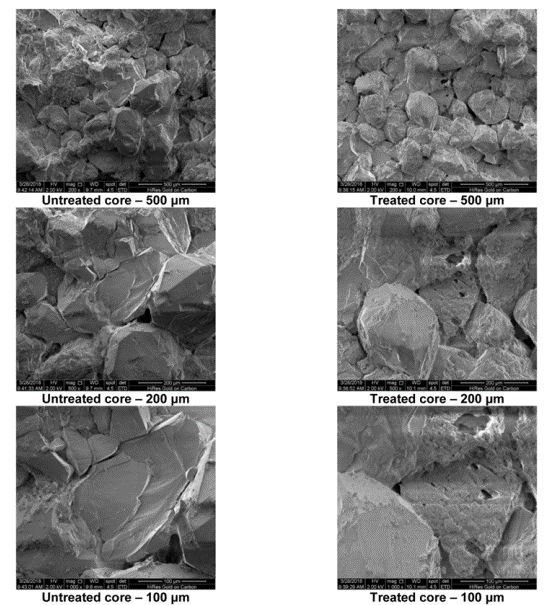The loss of drilling fluid into the formation can lead to reduced drilling efficiency, increased costs, and well instability or collapse. Different methods are available to minimize fluid loss, such as using appropriate drilling fluid properties, wellbore stabilization, and zonal isolation techniques. The addition of liquid glass or sodium silicate to drilling mud can create a sealant that reduces the permeability of the formation, leading to increased oil production. Nanosilica particles have also been investigated for gas shutoff applications in the oil and gas industry, which can enhance the fluid's properties and ability to plug fractures and prevent gas migration.
Keywords: drilling fluid, drilling fluid properties, wellbore stabilization techniques, lost circulation materials, sealants, liquid glass, nanosilica particles, gas shutoff.
Drilling fluid, also known as drilling mud, is an essential component of the drilling process, as it helps to lubricate the drill bit, cool it, and transport cuttings to the surface. However, if the drilling fluid is lost into the formation being drilled, it can cause various operational and financial issues, such as reduced drilling efficiency, increased costs due to the need for additional drilling fluid, and even well instability or collapse.
There are various causes of drilling fluid loss, such as formation instability, wellbore collapse, excessive pressure, and inadequate drilling fluid properties. The loss of drilling fluid can occur during various drilling operations, such as drilling, tripping, and cementing.
Several methods are available to minimize the loss of drilling fluid, such as using appropriate drilling fluid properties, wellbore stabilization techniques, and zonal isolation techniques. Additionally, various chemical additives, such as lost circulation materials, sealants, and plugging agents, are used to seal the formation and prevent fluid loss.
Several studies have investigated the issue of drilling fluid loss and the effectiveness of various methods to prevent it. For example, Gupta et al. [1] investigated the use of various lost circulation materials to prevent fluid loss in fractured formations and found that the materials significantly reduced the loss of drilling fluid. Similarly, Adeleye et al. [2] investigated the use of wellbore strengthening materials to prevent wellbore collapse and reduce fluid loss.
Methods. Liquid glass (sodium silicate) is often mixed with drilling mud to create a sealant that can reduce the permeability of the formation and create a barrier that prevents the loss of drilling fluid.
The silica gel that is formed when liquid glass reacts with minerals in the formation can help to control the flow of fluids and improve the stability of the formation, ultimately leading to increased oil production. This technique has been shown to be effective in both low-permeability and high-permeability formations. For example, Zhang et al. [3] investigated the use of liquid glass as a sealing agent in low-permeability sandstone reservoirs and found that it significantly reduced the permeability of the formation. Similarly, Al-Rbeawi et al. [4] investigated the use of liquid glass and silica nanoparticles in high-permeability sandstone formations and found that it significantly reduced the loss of drilling fluid into the formation.
Experiment. An experiment involving mixing liquid glass with drilling mud would typically involve the following steps:
- Preparation of drilling mud: A batch of drilling mud is prepared according to the desired properties such as viscosity, density, and pH.
- Preparation of liquid glass: Liquid glass, also known as sodium silicate, is prepared by mixing sodium silicate powder with water to achieve the desired concentration.
- Mixing of liquid glass and drilling mud: A measured amount of liquid glass is added to the drilling mud, and the mixture is stirred using a mechanical mixer or other means.
- Testing of the mixture: Various properties of the mixture, such as rheological properties, filtration properties, and permeability reduction, are tested using appropriate instruments and methods.
- Comparison with control samples: The performance of the mixture is compared with that of control samples, which are drilling mud samples without liquid glass.
- Analysis of results: The results of the experiment are analyzed to determine the effectiveness of the liquid glass and drilling mud mixture in reducing the loss of drilling fluid.
In general, the effectiveness of the liquid glass and drilling mud mixture would depend on factors such as the concentration and type of liquid glass used, the properties of the drilling mud, and the characteristics of the formation being drilled.
Specific details of the experiment, such as the exact concentrations and testing methods used, would vary depending on the objectives of the experiment and the properties of the materials being tested [3, 4].
Nanosilica-based fluid systems have been investigated for gas shutoff applications in the oil and gas industry. The addition of nanosilica particles to the fluid can enhance its properties and improve its ability to plug fractures and prevent gas migration.
The studies published in [5, 6] evaluated the effectiveness of a nanosilica-based fluid system for gas shutoff applications. The researchers used a mixture of nanosilica particles and a polymer gel to create the fluid system. They found that the system had good stability and was able to effectively block gas flow in laboratory experiments.
Following core flooding tests, the core plug was disintegrated, and the surface of the pore structure was observed using scanning electron microscopy (SEM). The amorphous substance was observed within the pore structure of the treated core plug. An untreated core sample was employed to compare the formation of the in-situ amorphous material. Figure 1 illustrates SEM images of the fractured core surface at different scales of 500, 200, and 100 pm. The untreated core surface appears glossy and smooth, whereas the treated core surface appears uneven. This indicates the formation of the amorphous substance at all three scales.

Fig. 1. Core flooding tests [6]
Another study published [7, 8] also investigated the use of nanosilica particles for gas shutoff applications. The researchers used a mixture of nanosilica particles and a foaming agent to create the fluid system. They found that the system was effective in reducing gas permeability and increasing the pressure required for gas to flow through a porous medium.
Conclusions. Mixing liquid glass with drilling mud can be an effective way to prevent the loss of drilling fluid and improve the efficiency of drilling operations. The resulting sealant can reduce the permeability of the formation and control the flow of fluids, leading to increased stability and improved oil production.
These studies suggest that nanosilica-based fluid systems have the potential to be an effective solution for gas shutoff applications in the oil and gas industry. However, further research is needed to optimize the composition and properties of the fluid system and to evaluate its performance in field applications.
References:
- Gupta, R. K., Prasad, M., Singh, V. K., & Singh, R. K. (2018). Comparative evaluation of different lost circulation materials for fractured reservoirs. Journal of Petroleum Science and Engineering, 162, 153–166.
- Adeleye, I. A., Adeoye, O. A., & Omole, S. O. (2017). Effect of wellbore strengthening materials on wellbore instability and fluid loss control. Journal of Petroleum Science and Engineering, 157, 50–62.
- Zhang, S., Yao, Y., Zhang, L., & Li, L. (2019). Experimental study on permeability reduction mechanism of liquid glass sealing agent for sandstone reservoirs. Journal of Petroleum Science and Engineering, 183, 106412.
- Al-Rbeawi, S. J., Hossain, M. E., Nasr-El-Din, H. A., & Al-Anazi, H. A. (2018). The effect of silica nanoparticles and sodium silicate on the rheological and filtration properties of water-based drilling fluids. Journal of Petroleum Science and Engineering, 167, 359–367.
- Li, S., Li, Y., Wang, Z., Li, X., Li, C., & Li, W. (2019). Investigation on the effectiveness of a nanosilica-based fluid system for gas shutoff applications. Journal of Petroleum Science and Engineering, 179, 486–494.
- Karadkar, P., Almohsin, A., Bataweel, M., & Huang, J. (2019). In-situ Pore Plugging Using Nanosilica Based Fluid System for Gas Shutoff. Abu Dhabi International Petroleum Exhibition &Conference. doi:10.2118/197578-ms.
- Yang, H., Chen, B., Wang, H., Li, L., & Liu, Y. (2020). A nanosilica-based fluid system for gas shutoff in tight sandstones: A laboratory study. Journal of Natural Gas Science and Engineering, 77, 103372.
- Wang, S., Wei, W., Guo, C., Zhao, X., & Fan, H. (2021). Experimental Study on the Properties and Applications of Nanosilica-Based Gel in Water Shutoff of Gas Wells. Energy & Fuels, 35(4), 3274–3284.







